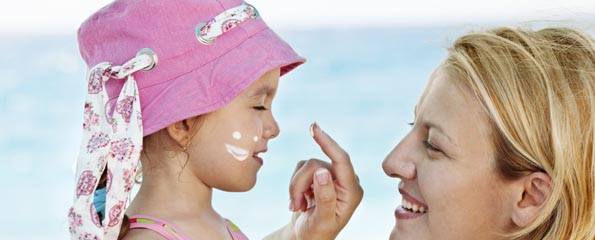Sunbakers are burning out
New Cancer Council research shows Australian adults are less interested in getting a suntan and fewer are being sunburnt.
The research, published in the Australian and New Zealand Journal of Public Health, compares the results of the National Sun Protection Survey conducted in summer 2010-11 with the surveys in 2003-4 and 2006-7.
The proportion of adults desiring a tan fell from 39% in 2003-4 and 32% in 2006-7, to 27% in 2010-11. Fewer reported getting sunburnt at the weekend – 18% in 2003-4 compared with 13% in 2010-11.
Similar changes were reported for adolescents. The proportion of adolescents desiring a tan fell from 60% in 2003–4 and 51% in 2006–7, to 45% in 2010-11 and 25% were sunburnt in 2003-4 and 24% in 2006-7, falling to 21% in 2010-11.
Chair of Cancer Council Australia’s Skin Cancer Committee, Terry Slevin, said improved sun protection behaviour (wearing sunscreen and long-sleeve tops) was noted over time, but mainly for adults, and there was less improvement in more recent years.
“The fact that people are reporting less intention to tan is encouraging and adds to the evidence that prevention and awareness campaigns are having an impact.
“But one in five adolescents and one in eight adults still report getting sunburnt, so while attitudes towards tanning are improving, we are still seeing people getting too much sun. This means that approximately 363,000 adolescents and two million adults are still getting sunburnt on any given summer weekend.
“Hat use has actually decreased over time among adolescents and adults, as has leg cover among adolescents. The most common reasons people reported getting sunburnt were that they ‘stayed in the sun too long’, ‘forgot’ to protect themselves, or the sunscreen ‘wore off’.
“Sun protection among adolescents and adults is still far from ideal, with only 23% of adolescents and 45% of adults wearing hats when outdoors. The decrease in adults and adolescents spending time outdoors and hence less sunburn in 2010-11, may also reflect a very wet summer that year. ”
Mr Slevin said this reinforced the need for continued reminders for the Australian population to protect themselves from the sun. The seven-year research period coincided with the first national skin cancer awareness campaign, broadcast from 2006 to 2010, with a number of state governments also investing in TV campaigns during this time.
“In 2010-11, the ‘Dark Side of Tanning’ advertisement was broadcast in all states and territories except Tasmania and Northern Territory,” he said.
“83% of adolescents and 80% of adults surveyed in the research recalled seeing the advert.
These campaigns have had an impact, but unless the Australian Government reinvests in an ongoing national campaign, we risk losing the gains we have made.
“While improvements in behaviour are being made, worryingly the number of skin cancers reported is still increasing. The Medical Journal of Australia reported that the total number of non-melanoma skin cancers increased from 412,493 in 1997 to 767,347 in 2010. It is estimated that this will increase to 938,991 by 2015. The cost of treating these cancers exceeds $500 million per year.
“Men are also disproportionately affected, with one in 14 men diagnosed with melanoma before the age of 85, compared with one in 23 women,” Mr Slevin said.
Mr Slevin said Cancer Council would continue to invest in skin cancer awareness and prevention activities, including media campaigns and early childhood and schools programs.
(Source: Cancer Council Australia: Australian and New Zealand Journal of Public Health)
More information
 | For more information on skin cancer including common types of skin cancers, and its treatment and preventative measures, as well as some useful videos, see Skin Cancer. |
Dates
Tags
Created by:

 Login
Login














